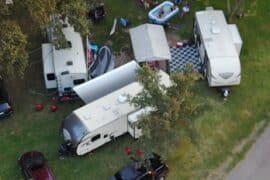Adelaide Hills Fire Preparedness and Safety: A Parent’s Toolkit
Hello, super parents of Adelaide Hills! ? If you’re looking to arm yourself with knowledge and strategies to keep your lovely bunch safe during fire season, you’ve landed on the right page! As enchanting as the Adelaide Hills are with their rolling landscapes and lush greenery, they can also be a hotspot for fires. That’s why we’re here to offer a comprehensive, smile-inducing guide to help parents like you navigate these fiery times with confidence and calm. ??
Understanding the Fire Season in Adelaide Hills
Before we dive into the nitty-gritty, it’s important to understand what we’re up against. Fire season in Adelaide Hills can be unpredictable and intense due to the region’s warm, dry summers and bursts of high winds. Awareness is your first line of defense. ? Let’s become familiar with fire danger ratings, local fire services updates, and essential terminology so you’ll feel more in control.
Creating a Bushfire Survival Plan: Your Family’s Blueprint
“Fail to plan, plan to fail,” they say. When it comes to bushfires, having a clear, practiced bushfire survival plan is critical. Sit down with the family and craft a plan that includes a safe meeting point, an emergency contact list, and an escape route. Involve the kids; it’ll not only educate them but also help reduce their anxiety by making them feel part of the team. ????????
Educating Your Children About Fire Safety
Fire safety isn’t just for adults! Teaching your kids about the danger of fires and how to react during a bushfire can make all the difference. Role-playing, fun activities, and visiting the local fire station can turn crucial safety lessons into engaging experiences for those little minds. ?
Emergency Kits: The Ultimate Safety Packs
Ever heard of a superhero’s toolkit? That’s your emergency kit during fire season. Whether you need to vacate your home quickly or bunker down, your kit should be stocked with items like water, non-perishable food, first aid supplies, important documents, and comfort items for the kids. We’ll take you through building the ultimate kit that’ll have you ready to face any emergency head-on. ??
Fireproofing Your Home: A Layer of Protection
Your house is your fortress, and with a few tweaks, it can be a bastion against bushfires, too. Fireproofing your home involves maintaining clear zones around your property, choosing fire-resistant plants, and knowing when to clean gutters and remove debris. This isn’t just about safeguarding your property—it’s about creating a sanctuary for your family. ?
Staying Updated: Information is Power
When bushfires strike, accurate and timely information saves lives. Bookmark the websites of the Adelaide Hills Fire Service and other local emergency services. Download apps like the Country Fire Service (CFS) app for real-time updates. Sign up for community alerts, and always keep your phone charged and ready. We’ll show you all the best sources for information to ensure you’re never out of the loop. ?
Dearest parents, inhale a breath of that crisp Adelaide Hills air and let’s get ready to become the most prepared family on the block! As the local gum trees stand tall and resilient, so too shall we, bolstering our homes and hearts against any blaze that dares to challenge our serenity. ?? Stay tuned for more in-depth insights and don’t forget, together, we’ve got this!

Five Crucial Fire Preparedness Tips for Adelaide Hills Parents
- Know Your Bushfire Risk Level: Understanding the specific bushfire risk for your area is paramount. The Adelaide Hills region has varying levels of vegetation and topography, which can affect fire behavior. Assess your home and community’s vulnerability by checking with local fire authorities and maps that highlight risk level zones.
- Regularly Maintain Your Property: Simple actions can significantly reduce the risk of fire damaging your home. Trim overhanging branches, mow grass, rake up leaves and remove other combustible material from around your property. Also, ensure you have a clear ‘defendable space’ as recommended by fire authorities, which will act as a buffer zone to slow or stop the spread of fire.
- Develop and Practice Evacuation Drills: Practice makes perfect! Conduct regular family fire evacuation drills so that everyone knows what to do if the need arises. Every family member, including children, should be familiar with the primary and secondary evacuation routes. Remember, during a bushfire, conditions can change rapidly; having a well-practiced plan ensures you can act quickly.
- Prepare a Relocation Kit: Sometimes, it’s safer to leave early before the threat of a fire becomes imminent. Put together a relocation kit with essentials such as medications, clothing, food, water, and personal documents. Pack items for your children to help comfort them, such as favorite toys or blankets.
- Stay Informed and Connected: Fires can ignite and spread quickly, so up-to-date information is vital. Have a battery-powered radio on hand, make sure your mobile phone’s emergency alerts are activated, follow local fire services on social media, and listen to your community. Networking with neighbors can provide crucial support and information sharing during emergencies.
Bushfire Preparedness Calendar: Year-Round Readiness
Bushfire safety is a year-round commitment. This calendar will help you stay on track:
- Winter: Plan and prepare. This is the best time for maintenance tasks like conducting controlled burns (under appropriate guidelines) and clearing gutters.
- Spring: Refine your family’s bushfire survival plan and prepare your property for high fire risk months. This is a good time to check the conditions of your firefighting tools or water pumps if you plan to defend your home.
- Summer: Stay alert. Monitor fire danger ratings daily and enact your bushfire survival plan if necessary. Prepare for possible relocation if advised by authorities.
- Autumn: Review and debrief. After fire season, analyze your family’s response to any events or drills and make note of areas for improvement. Restock and maintain your emergency kit as needed.
Cherished parents, there’s peace of mind in preparedness. Let’s empower ourselves with wisdom and solid planning. As we teach our children the beauty and power of nature, we’ll also instill in them the importance of respecting its might. Together, let’s make safety our family’s natural instinct! ???
. For more information see here
Disclaimer
The articles available via our website provide general information only and we strongly urge readers to exercise caution and conduct their own thorough research and fact-checking. The information presented should not be taken as absolute truth, and, to the maximum extent permitted by law, we will not be held liable for any inaccuracies or errors in the content. It is essential for individuals to independently verify and validate the information before making any decisions or taking any actions based on the articles.




